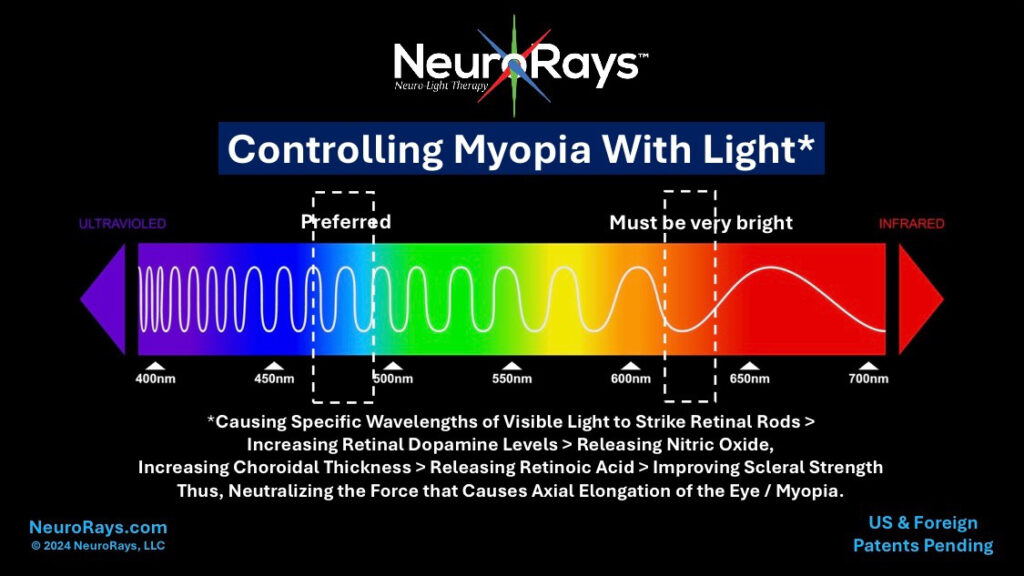(Three Questions, the Answers of Which Could have Profound Implications for the Global Optical Industry)
For Release; June 3, 2024, Atlanta, Georgia. NeuroRays, LLC www.NeuroRays.com announced it has invented optogenetic lens designs that use ambient lighting (indoor or outdoor) for the purpose of preventing or controlling Myopia (Nearsightedness). Optogenetics is a relatively new field of life science that utilizes specific wavelengths of light to stimulate neurons. The proprietary lens designs that NeuroRays™ is developing for myopia cause blue light wavelengths of 475nm +/- 20nm (from the ambient light) to target and stimulate retinal rods to increase retinal dopamine. These proprietary lens designs permit standard lens fabrication and treatments.

NeuroRays™ has assembled innovators and professionals from the Optical Industry, Optometry, and world renown neuroscientists from Harvard Medical School, and Emory Medical School (Department of Ophthalmology) to serve as consultants.
Ron Blum, OD, DOS; Founder, President / CEO of NeuroRays™ said, “NeuroRays™ was established earlier this year with the intent of utilizing ocular optogenetics research from laboratories and transforming that research into commercial products. The company has identified several human dopamine deficiency disorders as targets for its initial research and development. One of the first, where there is an enormous global need, is that of myopia (nearsightedness). It is widely reported that currently ~30% of the world’s population has myopia, and this vision disorder is projected to grow to 50% of the world’s population by the year 2050”.
Anita Broach, PhD; Chief Scientific Officer of NeuroRays™ stated, “Our research has reached the hypothesis that myopia occurs when the axial elongation force caused by accommodative near point stress of the eye exceeds the opposing resisting force of the eye’s ocular structure. Once that occurs the eye elongates, the choroid and sclera thin, and the condition of myopia comes about.
By using light of the appropriate wavelength to target retinal rods, we can stimulate the eye’s retina to produce dopamine > releasing nitric oxide, a vasodilator > promoting choroid blood flow > increasing choroidal thickness> releasing additional retinoic acid (RA) > causing scleral remodeling > healthier sclera. This increase in thickness of the choroid and improved health of the sclera strengthens the eye’s ocular structure, thus offsetting some or all of the force that causes axial elongation of the eye in the first place. This should then slow, and possibly stop the progression of myopia”.
As NeuroRays™ has pursued its research and development, it raised three intriguing scientific questions. Depending upon the answers, each could have a profound effect on the global optical industry.
The three questions NeuroRays™ is asking as it pursues its research are:
- Could thin and lite lenses, having a low Abbe number, be contributing to progressive myopia?
- Could today’s sunglasses be inhibiting dopamine production in the eye and brain?
- Could a “clear” lens be designed to stimulate the production of dopamine and / or serotonin in the eye and brain, and used to treat many of the human dopamine deficiency disorders? Such as, by way of example only; myopia, anxiety, depression, Alzheimer’s disease, Parkinson’s disease, ADHD, ADD, drowsiness, short term cognitive changes, restless leg syndrome, chronic constipation, certain forms of alcoholism and others.
In anticipation of what it believes the answers to the above three questions will be, NeuroRays™ has invented, protected, is developing, and will be testing the following family of products. The NeuroRays™ technical approach has been designed to work indoors with conventional indoor lighting or outdoors with sunlight.
DopaLens™; A completely new category of lenses that utilize a clear lens’ inherent longitudinal chromatic aberration in a positive way to increase retinal dopamine, thus increasing choroid thickening and promoting a healthier sclera to neutralize part or all of the force responsible for the elongation of the eye that causes myopia. DopaLens™ can also be worn by patients with other types of dopamine deficiency disorders.
DopaQT™; (QT for Quick Time) A darkened, enhanced version of DopaLens™ that is worn for brief periods of time independent of one’s conventional myopic correcting eyewear or as fit over eyewear in addition one’s conventional eyewear. DopaQT™ delivers only the specific wavelengths of light required to produce dopamine in the eye’s retina. For this reason, DopaQT™ should be able to be worn for a little as minutes in the morning and mid-day to slowdown, and possibly stop myopia progression. DopaQT™ can also be worn by patients with other types of dopamine deficiency disorders.
DopaSun™: Sunglass Lenses having an overall visible light transmission of 30% or less while transmitting specific light wavelengths needed to produce dopamine and serotonin in the eye and brain. DopaSun™ Lenses will be the world’s first and only sunglass lenses that provide bright light protection while enhancing dopamine and possibly serotonin production in the eye and possibly the brain.
About NeuroRays™
NeuroRays™ www.NeuroRays.com is developing the optics, and optical systems for optimizing, In Office & Out of Office Based Neuro-Light Therapy (Optogenetics), as well as proprietary clear lenses and sunglasses that stimulate dopamine production in the eye and brain. Such therapy and lenses may be able to treat patients having dopamine deficiency disorders, by way of example only; myopia, anxiety, depression, Alzheimer’s disease, Parkinson’s disease, ADHD, ADD, drowsiness, short term cognitive changes, restless leg syndrome, chronic constipation, certain forms of alcoholism and others. Each of these conditions will need to be individually explored to determine the efficacy of the NeuroRays™ therapeutic approach on the specific condition. Using the NeuroRays™ non-invasive approach it is believed to be possible to minimize light exposure time, while maximizing the optogenetic effect, or equaling the light exposure time while increasing the effect. Additionally, by utilizing light to generate a neurological effect, it is possible to bypass certain of the negative side effects of pharmaceuticals. The NeuroRays” proprietary approach can be tuned for every light wavelength band desired. Further, by utilizing the eye it is possible to non-invasively target any of the three photoreceptors required for the desired optogenetic therapy. The technical approach can be used in association with one’s current eyewear, in place of one’s current eyewear, or used as a standalone therapy. Treatment time depends upon the condition being treated; however, it can be consistent with how one wears his or her eyewear daily, or for those who do not wear eyewear perhaps as little as minutes in the morning and in the afternoon.
